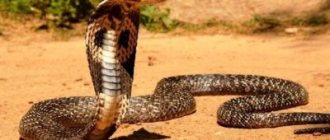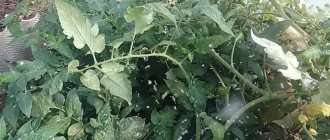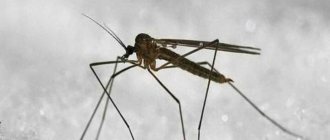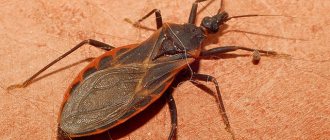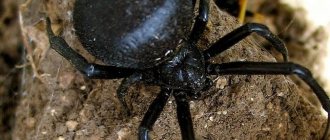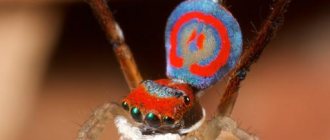Often small round holes are visible in the ground in personal plots or vegetable gardens. With a high degree of confidence we can say that these tracks were left by an earth rat. The rodents are a type of mouse called the vole. They are the largest representatives of this species.
Externally, the animals are similar to pasyuk:
- long round tail 6-13 cm, covered with hair;
- large body up to 25 cm long;
- Coat color varies from dark brown to black.
There is a version that there are rodents of a lighter color, but no one can say what a yellow earthen rat looks like, because no one has been able to see it in the wild. The quality of the hair depends on the habitat and age of the vole. The animal weighs up to 500 g. This is where all similarities with the rat family end.
The ground rat is very fertile. One female is able to give birth five times in a year, starting to give birth two months after birth. Each litter consists of two to fourteen rat pups, which are bred underground in a specially equipped place. Young offspring begin to lead an independent life from the age of one month. Under favorable conditions, the population of ground rats grows at a catastrophic rate and can reach 400 individuals per hectare of area.
Earth rat
Having noticed traces of a rat on the snow or ground in the area, you should immediately take appropriate measures to combat uninvited guests. Any methods applied in time will be good. Don't forget that time is against you. The longer pests live in the surrounding area, the more difficult it is to get rid of their presence.
The earth rat has a large head with a blunt muzzle, small eyes and ears, short front legs with long, almost straight claws. The hind legs are extended, which helps the animal to swim well.
Lifestyle
Pests of gardens and vegetable gardens - field rats remain active throughout the year because they do not hibernate. In winter they are only underground and seal the entrance to their burrows, protecting themselves from the influx of cold air. In hot summer weather, they also close access to their home, protecting it from too high a temperature.
Earth rats leave their shelters for a short time in the evening and at night to feed on plants or root crops. They do not stray far from the hole and, in case of danger, quickly hide in their shelter.
Rats dig holes in the ground and make numerous labyrinths at a distance of 10-20 cm from the ground surface. The nest is surrounded by a network of tunnels and has several storerooms where the animal stores supplies for the winter.
If there are holes and passages of moles near the home of an earthen pest, then the rat does not bother digging new ones and can use ready-made labyrinths to quickly get to the food source.
Gopher
The gopher is an underground dweller that can be found in Central America. It has the following dimensions:
- length – 9 – 35 centimeters;
- tail – 4 – 14 centimeters;
- weight – 1 kilogram.
In most cases, gophers live underground, and their housing most often includes complex underground passages. It is assumed that the passages are laid in different soil horizons. The length of the tunnels often reaches 100 meters.
What does it eat?
A ground rat in a garden is a disaster for owners, because while digging holes, it destroys everything in its path. Loves to eat alfalfa, damages grains (wheat, barley), cotton and rice sprouts during the ripening period. Melons and melons, including melons and watermelons, are also not ignored.
If you come across young trees along the way, then rats in the countryside can cause their death. They gnaw seedlings at the root collar or eat away the bark, causing irreparable damage. Apple trees, bird cherry and willow trees are most often affected.
Not only useful plants, roots and tubers are eaten by these pests. Previously, it was thought that the weed could stop water rats, but in the absence of the necessary food, they eat everything that grows on the ground.
Earth rodents hunt small field mice, mollusks, crayfish, insects and other living creatures. They feel great in water, climb trees, attack bird nests, destroy them and eat chicks. They can live in houses, barns, cellars, destroying the harvest. In pursuit of food, they gnaw through adobe walls and dig labyrinths under the floor.
Habitats
The ground rat can be found in the central part of the country, the southern regions of Siberia, the Caucasus and Central Asia. The Far North is unfavorable due to very low temperatures and lack of sufficient nutrition. Wet lowlands along the banks of reservoirs, areas around swamps and damp meadows are the most favorite places for rodents to live. Too many breeding animals force them to settle in fields, orchards and vegetable gardens. During river floods, they move to drier and more suitable places to live.
Pest Control Methods
To get rid of an earthen rat, you need to make sure that this is exactly the rodent that does not allow you to work in peace on your site. Maybe your neighbor has become a mole. He is also capable of digging up the entire garden and vegetable garden and destroying the harvest. It is worth looking at a photo of an earthen rat and then deciding on methods of struggle.
There are different ways to solve the problem, depending on what the intended goal is: to completely get rid of the pest or to drive it out of your territory. The following methods are used for these tasks:
- mechanical – traps, traps, ultrasonic repellers;
- chemical – poisons and poisons for rats, toxic substances;
- animals on the site - cats, dachshund dogs;
- smoking;
- planting fragrant plants;
- filling holes with water.
Let's take a closer look at how to deal with earth rats mechanically. The option is lengthy and requires some patience, since you need to find rodent holes, dig a 15-20 cm hole in front of them, set a trap or trap for rats and disguise them so that the animal does not notice them. You can use electronic traps that electrocute the victim. But rats are smart creatures and will not come a second time to where their relative died.
Chemical poisons or drugs that are toxic to pests, if used incorrectly, can ruin not only the harvest, but also cause poisoning of humans or pets living in the house. This path is not the safest to use. Justified in the case where a large number of pests have grown on the site and it becomes simply impossible to catch them.
There are more humane ways to fight. Cats and dogs living in the house will hunt rodents and force them to leave the inconvenient territory. Ultrasonic devices will also drive them out, creating certain frequencies that constantly irritate the animals. Ultrasonic rodent repellers do not pose a danger to humans.
Krawczyk (snow beetle)
A representative of the dung beetle family. Only it differs from its relatives in that it feeds on herbivorous food. It was nicknamed the shear beetle because it literally cuts off plant stems with its powerful jaws.
The beetle is black, up to 2.5 cm in length. Its head is large and very noticeable, for which it is also called the bigheaded fish.
Red minnows dig deep burrows for themselves, which are quite complex and large. This happens mainly in early spring, during the mating period. Then the female begins building a burrow. A common, not yet branched burrow sometimes reaches up to 70 cm in depth.
Krawczyk are real architects. Their burrows even have outlets for rainwater. Then the female lays one egg at a time in specially prepared cells and begins a stage that is very dangerous for the future harvest. Kravchik harvest plants by cutting grass and shoots.
From greenery and their secretions, they form enough cubes to fill a hole. The beetle larvae will subsequently feed on this mass. Next year the number of kravchiks will increase, and all cycles will be repeated again and again.
Kravychiki greatly damage corn, sunflowers and, of course, grapes. These beetles stock up on food for their children so carefully that they are able to literally cut off all the seedlings.
Just one kravchik per day can destroy 10 grape shoots.
Chemicals are not very effective at getting rid of those that live deep in the ground. As a preventative measure, we can recommend a thorough and deep (60–70 cm) digging of the area. This depth should be enough for the holes to freeze over the winter. The main way to get rid of snow beetles is to pick them up by hand.
You can loosen the ground, filling up the entrances of holes, you can dig around the area around the perimeter, putting grass treated with special substances - pyrethroids - into the resulting grooves, but in any case you will have to collect pests and monitor their appearance.
Another effective method is to pour the most fragrant and cheapest vegetable oil, diluted with water, into the burrows, and after the minnows come out, collect and destroy them.
Features of the earth rat
This pest is an excellent swimmer, so it can easily move in any conditions in search of food. In the autumn, he moves closer to country houses and household plots, where he can find food for himself without much effort. The ground rat is distinguished by enviable fertility: the female gives birth to her own kind 5 times in 1 year, in quantities from 2 to 14 tiny living creatures. 2 years after birth, young water voles can already reproduce. Therefore, the difficulty of combating this pest also lies in fertility.
Given favorable conditions, the ground rat is capable of increasing its population to catastrophic proportions. In appearance, the earth rat is a fluffy and very attractive animal that belongs to the order of voles. This pest grows up to 25 centimeters in length, with the tail taking up half of its length. The animal weighs about half a kilogram and has a very variable color - from black to gray, with and without stripes of light colors.
The pest eats various root crops, tops, leaves, and also gnaws the bark of young trees. In addition, the water rat catches frogs, eats shellfish and hunts voles. In the summer, the rodent stays close to bodies of water, where there is enough food for them. Closer to winter, the pest moves closer to humans, settling in gardens or outbuildings. The water vole easily climbs trees in search of chicks and bird eggs.
The pest lives in hard-to-reach places, which are characterized by debris of old branches or unnecessary things. Among other things, the water vole builds pantries underground, where it stores food for future use. Therefore, its burrows represent many passages that are directed to pantries, to the nest, as well as to entry and exit points. She stores for the winter everything she has access to: potatoes, beets, carrots, grain, legumes, etc. The burrows are located at a depth of about 20 cm.
Vole
Looks like an ordinary mouse. Body length is no more than 13 cm. The color is brown, and gray on the tummy. Unlike the shrew, the vole will feed on your crop.
She likes roots, shoots, leaves and sometimes even seeds of some plants (for example, beans). It is even more prolific than the shrew - the field mouse is capable of reproducing offspring up to 7 times per season, 5 and sometimes 12 babies each.
In winter, voles are protected by a layer of fallen snow, so pests may simply not survive snowless winters. In winter, they can harm raspberry bushes and gardens.
Below is a photo of field mouse burrows. Pests usually live in groups and dig branched, complex tunnels. But this happens at a shallow depth - from 15 to 35 cm. Regular weed removal and timely harvesting can be used to prevent the appearance of voles on your site. But alas, even taking all the precautions cannot guarantee that you won’t get a vole.
So, what to do if field mice are already infested on your property?
Important! In general, the basic methods of controlling rodents in a summer cottage are approximately the same for shrews, voles, and rats.
The first way is to get a good, not lazy cat. Of course, if you take a kitten, things will not go the fastest, but this method can scare away voles for a long time and protect your area.
It would not be the wisest decision to use traps, since they are effective in the presence of only a few pests, and the number of voles tends to increase quickly.
The second method is poisoned baits and toxic substances. For example, you can make lumps of dry plaster and flour or other treats. Voles love to drink after eating, and gypsum congealed in the stomach will lead to immediate death. You can flood the holes, treat them with poisonous gases, or use an acute poison, after consuming which the animal will die.
Voles are smart, so if you choose a poison, it is better to choose one that the rodent needs to eat once than substances with a cumulative effect. The third method is smells and noises. A variety of ultrasonic repellers work effectively. Also, voles cannot tolerate the smells of elderberries and nuts, and they really do not like the aromas of essential oils. Therefore, you can put walnut leaves, elderberry, even garlic or a piece of fabric soaked in essential oil or, for example, kerosene in their hole.
The fourth method is ammonium nitrate solution, 3%. It needs to be poured into the hole (about 1 cup) and trampled on top. Ammonia is harmful to voles.
Why is the ground rat dangerous?
Since this harmful animal is highly fertile, it is not difficult to guess how much harm just one water vole colony can cause. A ground rat, if it settles in a country house or on a personal plot, is capable of eating everything that grows in the garden, as well as what is in a person’s home. If there is not enough food for them, then they begin to enter the house, feeding on cereals, bread crumbs, sausage, cheese, etc. In short, everything that a person eats, an earth rat will eat. In addition to the fact that it can eat part of the harvest, it spoils fruit trees and other green spaces, as it makes passages in the ground, violating the integrity of the root system. This leads to a partial loss of the harvest of fruits and berries, and often, after the active life of this animal, fruit trees and shrubs simply dry out.
In addition to cultivated plants, the earth rat spoils beds with vegetables and root crops, as well as flower beds, since the underground passages of the pest are located at a depth of no more than 20 cm. In Holland, this animal is considered the main enemy of tulip plantations. Under certain conditions, the ground rat can also destroy weeds. The process of harvesting grain crops is also becoming noticeably more complicated. Animals gnaw the bark from young trees of fruit and berry crops, which causes significant damage to garden plants.
In this regard, you should pay attention to the fact that if at least one individual is detected, you need to immediately consider tactics and strategies for combating such a pest. A pair of earth rats can quickly create their own colony, numbering dozens of living creatures, ready to swallow everything that gets in their way.
Medvedka
The mole cricket is a large insect whose body length can reach 5 centimeters. The visual differences will be as follows:
- the size of the abdomen is 3 times larger than the cephalothorax;
- the abdomen may be soft in structure and may have a fusiform shape;
- diameter – 1 centimeter;
- At the end of the abdomen, paired thin thread-like appendages are visible.
The insect is primarily inclined towards an underground lifestyle. Despite this, it is capable of flying well, running on the ground and even swimming. The insect almost never gets to the surface of the earth. Even if a mole cricket gets to the surface, it happens in the dark.
Effective methods of dealing with earthen rats
The fight against earth rats on a personal plot or in a country house involves several tactical approaches - catching pests, baiting with chemicals or expulsion. Which of these methods to choose depends on several factors, including the number of animals, as well as personal attitude towards one or another method of control. It is quite natural that almost all owners of vegetable gardens and garden plots do not recognize poisons and other chemicals. This is understandable, since poisons can harm not only pests, but also humans themselves, as well as pets. In addition, there is a category of people who have a negative attitude towards inhumane methods of struggle that involve the destruction of living beings, regardless of whether they bring harm or benefit.
Biological method of control
Almost everyone knows that cats are considered the natural enemies of rats and mice, but not everyone knows that dogs, especially some of their breeds, are also enemies of rodents. Naturally, not every cat is able to cope with an adult ground rat, which weighs almost half a kilogram and reaches a length of 25 cm. In addition, special breeds of cats are needed, and those pets that are kept in greenhouse conditions in many houses and apartments are unlikely to want to hunt rats and mice, since they do not lack food. And if you consider that not all cats have a developed hunter instinct, then you can’t really rely on cats in the fight against rodents. An ordinary yard cat can cope with such a task better than a pet with a long pedigree.
Shrew
The animal is similar to a vole, but has two obvious differences - a much longer tail and an elongated muzzle. There are two types of shrews: shrews and shrews.
The shrew reaches a size of no more than 7 cm and is gray in color, but most often a shrew with brown fur and no more than 5 cm in length appears in the garden.
shrew
Shrew
Don’t be fooled by the appearance of the animal, because just how cute a shrew looks in the photo does not mean that the damage from it will be minimal. In just a couple of days, the entire area can be dug up, and the lawn will be full of tussocks.
The shrew has a high metabolism, so it is constantly looking for food, which results in furrows like those in the photo of its burrows.
The baby feeds on insects, and it would be quite useful if the harm it causes were not many times greater than the benefit. In a day, it destroys pests several times its own body weight.
The furrows it creates help the earth to become saturated with oxygen. But the fact is that there is usually practically nothing left to grow on such land - the shrew gnaws through the roots and plants that stand in its way.
The first way to combat shrews is with poisons and chemicals. Products such as Anti-Rodent are used against animals. It is important to remember that the poison can be dangerous for pets or children, so be careful and read the instructions for use.
The second method is to flood the shrews' burrows. In this case, it is better to flood any hole that causes suspicion.
The third way is to use items with a strong, unpleasant odor. Shrews have a very delicate sense of smell, so they cannot tolerate strong-smelling things. Place rotten fish or eggs in the holes. The shrew will not tolerate such aromas and will leave the hole.
Using traps against shrews is ineffective. And any of the above methods does not provide a 100% guarantee. Shrews can easily come back to your site, so you should be very careful.
Folk methods of struggle
Rodents have a very developed sense of smell and touch; in addition, the shrew has well-functioning echolocation. Therefore, one of the most well-known and effective methods of control is to scatter pieces of herring around the area. It will begin to disappear and emit an unpleasant odor, which will scare away the shrew, but at the same time cause a lot of inconvenience to the owners of the site and their neighbors.
There are other folk ways to fight shrews:
- Deep digging of the garden. To do this, the entire area is dug up with a shovel to a depth of about 70 cm. This will not be easy to do, it is more suitable for small areas;
- Place eggshells in the hole;
- Plant legumes, marigolds or spurge around the area. It is known that the shrew does not like these plants and may soon leave the area due to unfavorable conditions.
Sometimes pets – cats – help in the fight against pests. They hunt pests for fun and thereby help their owners, but not every cat will do this.
Preventive measures
The main reason why a pest settles in a garden plot or country house is the availability of food in an accessible form. Therefore, to get rid of the pest, you need to work hard. If you follow useful tips, you can reduce the risk of a rodent appearing on your property several times. What should be done:
- Get a cat and a dog. These animals will help in the fight against rodents, scaring them away even with their smell.
- Regularly inspect your property for the presence of such rodents.
- Often play loud music on the street or dig several sticks in the area, hanging several tin cans on them. When exposed to wind, the jars will make loud sounds, which will repel pests.
- Frequently clean up the house, throwing out old, unnecessary things. A pile of junk attracts many parasites.
The water vole can cause a lot of harm if you do not start fighting it in time. It is important to choose the right way to get rid of the pest without causing damage to yourself, pets and plants.
The earth rat is considered a dangerous pest of gardens and vegetable plots. The animal belongs to the genus of mice and has nothing in common with rats except the shape and size of the body. The earth rat digs holes like a mole, leaves loose soil on the surface, and feels great in water, so it is important to know how to get rid of the earth rat.
The rodent swims and dives remarkably well. Moves to garden plots and vegetable gardens closer to autumn. Each female reproduces 5 offspring per year. From 2 to 14 cubs at a time. The young female gives birth 2 months after her birth. The main difficulty in fighting the earth rat lies precisely in its fertility. Under favorable development conditions, the number of rodents reaches catastrophic numbers.
Reproduction
Ground rat breeding
Females reach sexual activity at the age of 5 months. They breed all year round. Over the entire season, the rat gives birth to 3 litters of up to 10 cubs each. Already 18 hours after the birth of the pups, the rats are again ready for fertilization. Pregnancy lasts about 25 days.
The female raises the cubs for about a month. Cubs are born blind, deaf, toothless, and naked. After 2 weeks, the eyes open, hearing appears, and teeth begin to emerge. After 30 days, the younger generation is expelled. Each representative digs his own hole.
Earth rat - appearance, feeding habits
The rodent is considered the largest representative of the vole species. Body length is 25 cm, of which the tail length is 6–13 cm. Weight reaches 500 g. Body color is variable: gray, brown, black, with a white stripe on the back, light sides. But most often these are brown and black tones. The attractive fluffy animal resembles a large mouse or rat.
It feeds on seeds, roots, green parts of plants, and the bark of young trees. It can feast on field mice, mollusks, river animals, and frogs. Stores reserves for the winter. In summer, it settles near water bodies. With the onset of cold weather, it makes its way closer to a person’s home and his lands. You can see the earth rat in the barn, in the beds, in the garden. She deftly crawls through trees, destroys bird nests, feeds on eggs and chicks.
Mole: description, lifestyle, reasons for appearing on a summer cottage
A mole is a small predatory mammal with short legs that belongs to the order of insectivores. It has an elongated body with thick velvety fur. The animal's fur is black-brown or dark gray. The body length of an adult reaches 15–20 cm. Moles have underdeveloped eyes (they lack a retina and lens), and the eye openings themselves look like narrow slits covered with movable eyelids. In some species, the eyelids are completely fused together. The lack of vision is compensated by an excellent sense of smell and touch.
Ground rat in the garden
It is not difficult to guess that with a large number of pests in one area, the entire crop may suffer. The rat stuffs small potatoes into the pantry, and gnaws large ones on the spot. The same thing happens with carrots and beets. In addition to stealing the crop and damaging it, the earth rat damages all vegetation with its moves. They are located close to the surface of the earth. In the process of digging, the rat touches roots and stems. They end up on the soil surface, dry out over time, and the plant dies. In Holland, the ground rat is considered a dangerous pest of tulips. There is nothing in the garden or flower beds that a rodent would disdain. Even weeds are used.
When harvesting grain crops, mounds on the surface of the ground make harvesting difficult. In addition, the earth rat covers the fallen stems with earth. The pest gnaws the bark of young trees. After a feast of several individuals, the tree dries up. It is difficult to overestimate the damage caused by the earth rat. With strong reproduction, the pest can destroy literally everything. Considering the great fertility of the earthen rat, the reaction to the presence of rodents in the garden should be immediate.
Tuco – Tuco
Tuco-tuco are small rodents:
- weight – 700 grams;
- body length does not exceed 25 centimeters;
- The length of the tail is about eight centimeters.
Such sizes are direct evidence that tuco-tucos are ideally adapted to underground life. In addition, rodents are actually ready to build various residential objects from soil and sand, ideally adapted for the constant residence of a tuco-tuco.
The methods of control are the same as for mole rats and rats.
Rat control methods
There are several ways to rid your garden of rodent infestations: poisoning, expelling, catching. The choice of control methods depends on the number of pests and on a person’s personal preferences.
Rodents are exterminated using:
- biological method;
- mechanical;
- chemical.
The advantage of these control methods is the complete destruction of pests and quick results. But sometimes it’s easier to simply expel pests from your territory. They also do this in several ways: using folk recipes, using professional equipment. Rats are extremely sensitive to odors, so they can be driven out using strong-smelling substances, and even plants.
Biological control method
The main enemies of rats are cats and dogs. In this case, it is necessary to take into account the fact that the earthen rat reaches large body sizes and can weigh 0.5 kg. Not every cat can handle it. Moreover, today's pets are not particularly keen on hunting. Their true instincts are dormant. It's not always possible to force someone to chase a hefty rat. Special types of dogs are slightly more effective weapons. For example, a dachshund will compete with a rat. If there is one, the problem with pests in the garden is practically solved.
Biological weapons are inherently convenient. It does not require any effort from a person, hunting animals eat their prey, and there is no need to look for dead carcasses. Or they put them in a certain place.
Mechanical method of fighting
Since ancient times, the main weapons against rats have been traps and snares. Currently, they are also being used with success. Special arc traps are used that are buried in the ground at a depth of about 15–20 cm. They are not sprinkled with earth on top. They are located near the entrance to the hole. In addition to these traps, cylindrical traps and self-made structures are used. Professional means of destruction include electronic traps. An electric current is supplied to them. The rodent is exposed to electric current and dies on the spot.
The control method is quite effective, but not always effective. Rats are considered smart, cunning animals. They can avoid traps and snares after seeing how a relative suffers once. The effect of destruction in the first days, then no special results are observed. In addition, other animals, including pets, may fall into the trap.
Chemical extermination of rodents
When you see a rat in the garden, the first thing that comes to mind is to poison it. Currently, the choice of these funds is so large that you can get confused. They have different effects: some cause suffocation, others paralysis, and others drive you crazy. The result is the same - certain death. The most effective method of exterminating rodents, but requires caution. The poison is scattered near the holes or mixed into food. In order for the animal to willingly eat the bait, it must be fed for several days. For example, treat 2 days in a row with fragrant bread. After the rodents lose their vigilance, they are treated to poisoned bait.
A significant disadvantage is that other animals can be poisoned. Besides. The poison may remain in the soil where vegetables grow. As a result, you can get poisoned yourself if you make mistakes in using the poison. And the last point - rodents will die everywhere, decaying animal carcasses may end up near growing vegetables. Finding all the corpses is almost impossible.
Mole rat
In many ways it is similar to a mole, although it is larger in size, but the marks it leaves behind are about the same. The main difference is that mole rats are voracious rodents, and the fight against them can be painful and long.
Mole rats are usually no more than 32 cm in length. They have very short legs and gray fur. The tail is not visible, as it is too small, the eyes are reduced and hidden under the skin.
The widest part of a mole rat's body is its head. If you look at the animal from above, it resembles a shovel. The mole rat's front teeth are long and protrude.
This pest especially loves potatoes and carrots; it affects garlic and beets, onions and bulbous flowers. It can also damage other plants, such as corn or beans.
The fight against mole rats, due to their underground lifestyle, is not always effective, but is still possible. Just remember that there is a giant mole rat listed in the Red Book.
Usually, when the entire garden is in holes, the summer resident is not particularly concerned about who did it, just to exterminate the pest. The giant mole rat is distributed mainly in sandy and clayey soils near water bodies.
They can be found in the Caucasus, in Dagestan, near the Terek, Sulak and Kuma rivers. It may turn out that just such a rare animal lives on your site.
Giant mole rat
Common mole rat
Mole rat minks
What is the difference between a mole rat and a mole?
Some people mistakenly confuse these rodents with moles, but they are completely different animals. There are two main differences between them:
- The mole rat is much larger.
- The mole builds its tunnels with the help of its paws, but the second one has them poorly developed and has small claws, so it carries out construction work thanks to its front incisors.
- Moles feed on insects, and mole rats prefer roots and plant stems.
Methods of pest control
In the fight against mole rats, poisons that are intended for baiting rats and moles, traps, traps and cats are actively used. The use of poison remains the most effective method in the fight against rodents.
Chemicals must be used with great care. After all, they can also attract curious or hungry pets. It is also necessary to take into account the degree of toxicity of the substance used, because it can get into the soil and cause harm to the owner.
Is it worth using traps?
Mole rats have excellent intelligence, thanks to which they deftly avoid traps and various kinds of traps. Elderly individuals sense danger especially well. It is almost impossible to lure them into a trap.
The situation is further complicated by the fact that the animals live deep underground, where it is simply impossible to reach with a trap. In any case, you need to try and use some cunning. Suddenly the underground dweller loses his vigilance and falls into a trap.
To set a trap, you need to find a tunnel dug by the rodent and dig a hole in it, at least 1 meter deep. The mole mole does not like drafts, so it will crawl out of the hole to seal the passage, and this is where the installed trap comes in handy, which needs to be covered with plywood on top for camouflage.
The rodent has a good sense of human odor, so you need to wear gloves when setting the trap. All parts of the structure should be treated with onions, which with their pungent aroma will cover the human smell.
Repellent methods of control
Animal lovers who feel sorry for destroying mole rats can use repellents. Although they will not destroy the enemy, they can force them to leave the area. Pests have a good sense of smell, so you can throw a piece of fabric soaked in kerosene or diesel fuel into their hole. The underground inhabitants will perceive them as a threat and leave the area.
Mole rats cannot tolerate the smell of wormwood, elderberry, mint, medicinal blackroot and imperial hazel grouse, the unpleasant aroma of which comes from the bulb itself. If you plant such plants on a site, you can hope that the rodent will bypass it. Mole rats do not like excessive noise, so you can make your own repeller that will help drive them out:
- A piece of reinforcement is driven into the ground so that 40 cm remains above the surface.
- They put an empty metal can on it and wait for windy weather.
- From the gusts, the bank will begin to hit the reinforcement, and an unpleasant noise will spread underground.
Special devices that emit ultrasound are effective in pest control. When buying such a device, you need to pay attention to the following points:
- Radius of action. It will not be possible to save the site with the help of one device. You need to immediately purchase several ultrasonic emitters.
- Availability of settings. It must be possible to change frequencies. Otherwise, rodents will get used to them and stop avoiding the area.
The advantage of such equipment is that it repels other pests. The site will remain under reliable security.
Professional repeller
Currently, electromagnetic repellers are very popular. Its action is aimed at the psyche of rodents. A certain frequency of sound is not perceptible to humans and domestic animals; it affects rodents with great force. The devices operate on mains power or batteries. Each model has its own radius of influence. Rodents are literally going crazy. 2-3 days of continuous influence and they will begin to leave the area. According to reviews, the devices are quite effective indoors, but are less effective outdoors. Another point is that it is unknown how far the pests will go.
Perhaps they will settle in the neighborhood and return again after a while.
Expulsion by folk methods
The ground rat does not like strong odors. There are several ways to free the territory:
- set the rubber on fire and put the smoking one in a hole;
- burn the rabbit skin, stuff the remains into holes;
- pour kerosene on a dead rat carcass, burn it, put the remains in a hole;
- fill the hole with water and soot;
- soak rags in machine oil, kerosene, gasoline, and stick them in holes.
In addition, you can use plants. These creatures cannot tolerate the smells of wormwood, tansy, chamomile, elderberry, hawthorn, and mint. By the way, plants can be used for prevention purposes. You can plant mint and chamomile among the beds.
Whatever method of exterminating a rat is chosen, the main thing is to act quickly. These creatures multiply so quickly that you risk being left without a harvest at all.
- Author: Maria Sukhorukikh
Rate this article:
- 5
- 4
- 3
- 2
- 1
(0 votes, average: 0 out of 5)
Share with your friends!

